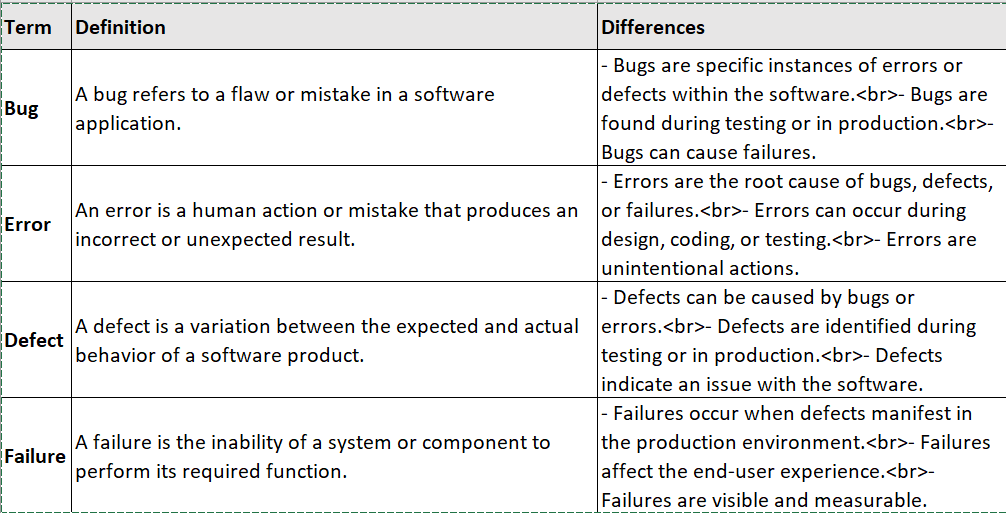Introduction:
When it comes to software testing, one important aspect that every newbie should understand is bugs. Bugs are like little unexplained problems that can cause your software to break or not work at all.
What is Bug, Error, Defect & Flaw in Software Testing?
Error: An error is a mistake that is made by people while creating the software. This can happen during various phases, such as planning, designing, writing code, or testing.
For example, a programmer may accidentally write incorrect code or forget to include a required step.
Bug: A bug is a specific type of fault in software that causes it to not work properly. It's like a small problem that makes the software do what it shouldn't or prevents it from doing what it should. Bugs can be found during testing or when people use the software and notice that something is not right. Typically an error will lead to a bug.
Defect: Defect is a general term that includes both errors and bugs. It refers to any problem or issue in the software due to which it does not work as expected. It could be a bug in the code, missing features, things running too slowly, or security vulnerabilities.
Flaw: Flaw means that there is a weakness or problem with the way the software was designed or manufactured. It's like a fundamental problem that can lead to a defect or a bug. Flaws are mistakes in how software was planned or built, and they can make it more likely to have problems.
Click on the below image for better view:


Post a Comment